
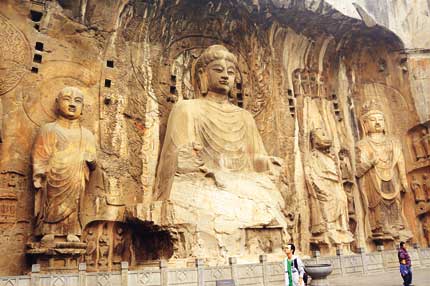 |
| The giant statue of the Vairocana Buddha in Fengxian Temple, with her benign smile and penetrating gaze, is a highlight of any trip to Longmen. (Photo/Shanghai Daily) |
WALKING along the banks of the Yihe River toward Longmen Grottoes on a drizzly morning, I watched the mighty river wind slowly through the "gateway" formed by mountains on either side.
Surveying the scene, it was easy to understand why this valley between the Longmen and Xiangshan mountains was once known as "Yique" - literally "the gate of the Yihe River."
The Longmen Grottoes lie in the south of Luoyang, in central China's Henan Province.
The city was capital of 13 ancient Chinese dynasties and is considered the origin of the central plains Heluo Culture.
Some 1,400 years ago, when Suiyang Emperor Yang Guang (AD 569-618) climbed Mangshan Mountain in north Luoyang and saw Yique to the south, he was awed by the sight, describing it as "a supernatural valley awaiting the arrival of the Son of Heaven."
So impressed was the emperor, that his palace design was influenced by the valley.
"When building the royal palace, Yang Guang ordered that the front gate directly faces Yique Valley. From that time, people called the valley 'Longmen' - the gate of the dragon," explained my tour guide Zhu, pointing to a forceful inscription of "Yique" halfway up Longmen Mountain.
The world-renowned Longmen Grottoes, carved into the mountains on both sides of the river, date back to AD 493 when Emperor Xiaowen (AD 467-499) relocated the capital of the Northern Wei (AD 386-557) to Luoyang city from today's Datong in neighboring Shanxi Province.
Stretching around a kilometer, Longmen boasts 23,000 grottoes and more than 100,000 Buddha images - up to two-thirds dating from the Tang Dynasty (AD 618-907).
Travelling from India, west to China, Buddhism was the state religion in Northern Wei, Sui (AD 589-618) and Tang dynasties, and grotto building reached a peak at Longmen.
Sophisticated large-scale statues, stone carvings and inscriptions are nestled in grottoes dotting Longmen Mountain. Its formations offered thicker, more solid strata than on Xiangshan Mountain opposite.
Like many other grottoes in China, Longmen exhibits a kaleidoscope of politics, economics, religion, culture and art, and encompasses eight dynasties over 400 years.
But what makes it stand out is its dramatic transition in its art - more localized and human than styles in other complexes.
"Unlike the dignified and masculine Buddha images in the Yungang Grottoes in Shanxi Province, the works created during the Northern Wei Dynasty in Longmen are more slim, gentle and delicate," Zhu said, as she led me into Longmen's Binyang caves.
'Oh Yeah' Buddha
I noticed a group of tourists gathered outside the north cave, striking a familiar "Oh Yeah!" V-for-victory pose while getting their photographs taken. Walking up to the group I saw that they were posing beside a statue and I burst out laughing.
Although the left arm was missing and half of his face weathered away, here was a cross-legged Buddha sitting peacefully - holding aloft his right arm with his fore and middle fingers extended. And yes, there was indeed an uncanny resemblance to the V-for-victory photographic pose.
"The Buddha can't be that trendy, can it?" I asked.
"No. It's a Buddhist 'mudra' gesture to calm pilgrims and give them courage in the face of danger," Zhu smiled.
Still, many tourists fondly call it the "Oh Yeah" Buddha and flock to pose for photographs.
Three Binyang caves
The three Binyang caves were created during the reign of Emperor Xuanwu (AD 483-515) to honor his parents. It took 24 years just to complete the middle one, carved to commemorate Xuanwu's father, Emperor Xiaowen (AD 467-499).
The main statue has big eyes and a high nose bridge, features associated with the Xianbei nomads of Northern China, the emperor's tribe. A smile that seems to reach the eyes makes the statue more amiable-looking than the grand but austere Northern Wei statues in Yungang.


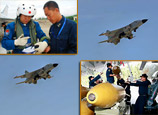

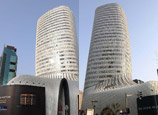
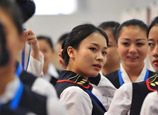

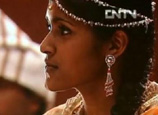

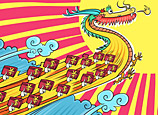
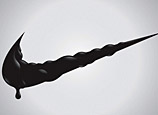






 Spring comes to China. More Spring Photos: 'Fresh style' ;'Spring Style'
Spring comes to China. More Spring Photos: 'Fresh style' ;'Spring Style'


![]()
